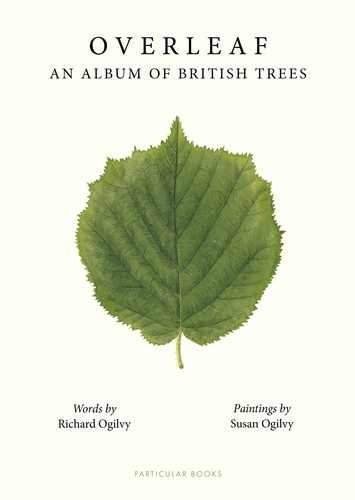
Overleaf: An Album of British Trees
by Susan Ogilvy, Richard Ogilvy
Genres: Non-fiction, SciencePages: 176
Rating:

Synopsis:Leaves live a thankless life. They go unnoticed while providing shade and cleaning the air, and are often the subject of our groans and grumbles in the fall while being raked away. Outside of brief odes to colorful autumn foliage, their quiet, everyday beauty is usually unsung.
Overleaf is an extraordinary celebration of that most obvious and overlooked part of a tree. It features over seventy brilliantly rendered studies of the leaves of thirty-seven tree species found across North America and Europe. Susan Ogilvy's paintings are lovely and uncluttered, resembling real-life pressings captured between the pages. The artwork is accompanied by Richard Ogilvy's thought-provoking text, which provides a vignette for each tree that explores its particular relationship with the environment, its style of growth, the history and mythology surrounding it, and the uses that birds, insects, and humans make of it. He reflects on the detailed complexity of our woodlands and forests and thoughtfully explores our place among them. Just as individual leaves create a cohesive shade, the range of these portraits provides a compelling vision of our relationship with trees. Overleaf is a thoughtful collection that will have readers taking a second look at the world above.
Overleaf is a fascinating collaboration between Susan Ogilvy, a botanical painter, and her brother-in-law, a forester. Each tree is illustrated by its leaf, showing the top side of the leaf on one page and then on the reverse side, the back of the leaf. They seem to be roughly to scale, and beautifully detailed; they aren’t the platonic ideal of each leaf, either, but a realistic one, probably based on a specific leaf, showing details of blight, galls and insect companions.
Richard’s contribution is the text, which for each tree is a handful of paragraphs talking about where the trees are found, their functions in the landscape, and some of the uses we’ve made of them and stories we’ve built around them. He explains some of the features in the images, pointing out the galls and associated other creatures, which ties the images and text together.
It’s a fascinating endeavour; it can’t really be used to identify the trees, since it contains only their leaves, but it’s an interesting compendium of detail and folklore.
Rating: 4/5
